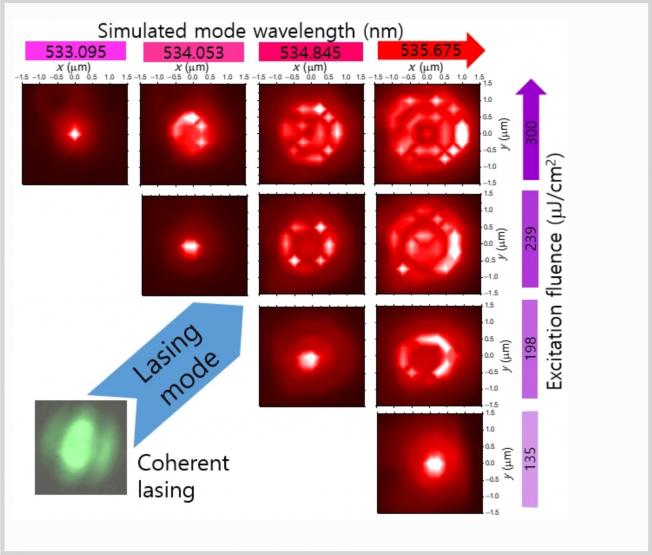A nanophotonic structure containing living photosynthetic bacteria
Small Wiley‐VCH Verlag 13:38 (2017) 1701777
Abstract:
Photosynthetic organisms rely on a series of self‐assembled nanostructures with tuned electronic energy levels in order to transport energy from where it is collected by photon absorption, to reaction centers where the energy is used to drive chemical reactions. In the photosynthetic bacteria Chlorobaculum tepidum, a member of the green sulfur bacteria family, light is absorbed by large antenna complexes called chlorosomes to create an exciton. The exciton is transferred to a protein baseplate attached to the chlorosome, before migrating through the Fenna–Matthews–Olson complex to the reaction center. Here, it is shown that by placing living Chlorobaculum tepidum bacteria within a photonic microcavity, the strong exciton–photon coupling regime between a confined cavity mode and exciton states of the chlorosome can be accessed, whereby a coherent exchange of energy between the bacteria and cavity mode results in the formation of polariton states. The polaritons have energy distinct from that of the exciton which can be tuned by modifying the energy of the optical modes of the microcavity. It is believed that this is the first demonstration of the modification of energy levels within living biological systems using a photonic structure.Temperature-dependent fine structure splitting in InGaN quantum dots
Applied Physics Letters AIP Publishing 111:5 (2017) 053101
Abstract:
We report the experimental observation of temperature-dependent fine structure splitting in semiconductor quantum dots using a non-polar (11-20) a-plane InGaN system, up to the on-chip Peltier cooling threshold of 200 K. At 5 K, a statistical average splitting of 443 ± 132 μeV has been found based on 81 quantum dots. The degree of fine structure splitting stays relatively constant for temperatures less than 100 K and only increases above that temperature. At 200 K, we find that the fine structure splitting ranges between 2 and 12 meV, which is an order of magnitude higher than that at low temperatures. Our investigations also show that phonon interactions at high temperatures might have a correlation with the degree of exchange interactions. The large fine structure splitting at 200 K makes it easier to isolate the individual components of the polarized emission spectrally, increasing the effective degree of polarization for potential on-chip applications of polarized single-photon sources.Theoretical and experimental analysis of radiative recombination lifetimes in nonpolar InGaN/GaN quantum dots
PHYSICA STATUS SOLIDI B-BASIC SOLID STATE PHYSICS 254:8 (2017) ARTN 1600675
Direct generation of linearly polarized single photons with a deterministic axis in quantum dots
Nanophotonics De Gruyter Open 6:5 (2017) 1175-1183
Abstract:
We report the direct generation of linearly polarized single photons with a deterministic polarization axis in self-assembled quantum dots (QDs), achieved by the use of non-polar InGaN without complex device geometry engineering. Here we present a comprehensive investigation of the polarization properties of these QDs and their origin with statistically significant experimental data and rigorous k·p modelling. The experimental study of 180 individual QDs allow us to compute an average polarization degree of 0.90, with a standard deviation of only 0.08. When coupled with theoretical insights, we show that these QDs are highly insensitive to size differences, shape anisotropies, and material content variations. Furthermore, 91% of the studied QDs exhibit a polarization axis along the crystal [1-100] axis, with the other 9% polarized orthogonal to this direction. These features give non-polar InGaN QDs unique advantages in polarization control over other materials, such as conventional polar nitride, InAs, or CdSe QDs. Hence, the ability to generate single photons with polarization control makes non-polar InGaN QDs highly attractive for quantum cryptography protocols.Polarisation-controlled single photon emission at high temperatures from InGaN quantum dots
Nanoscale Royal Society of Chemistry 9:27 (2017) 9421-9427



